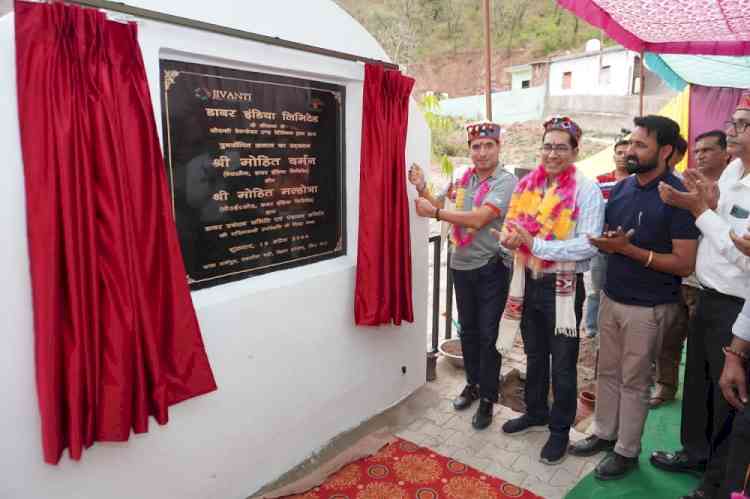Indian Cement Industry on Track to Meet 2030 Carbon Emissions Intensity-Reduction Objectives
New Delhi, Delhi, India: The World Business Council for Sustainable Development (WBCSD)’s Cement Sustainability Initiative (CSI) in India launched its Low Carbon Roadmap for Indian Cement Industry: Status Review 2018 report at CMA CONCREATECH...

New Delhi, Delhi, India: The World Business Council for Sustainable Development (WBCSD)’s Cement Sustainability Initiative (CSI) in India launched its Low Carbon Roadmap for Indian Cement Industry: Status Review 2018 report at CMA CONCREATECH 2018.
The World Business Council for Sustainable Development (WBCSD)’s Cement Sustainability Initiative (CSI) in India launched its Low Carbon Roadmap for Indian Cement Industry: Status Review 2018 report at CMA CONCREATECH 2018.
Five years from the initial launch of the International Energy Agency’s (IEA) first ever country specific low carbon technology roadmap (LCTR), CSI and IEA collaborated again, working with nine CSI member companies in India (ACC, Ambuja Cement, CRH, Dalmia Cement (Bharat), HeidelbergCement, Orient Cement, Shree Cement, UltraTech and Votorantim Cimentos) to carry out a comprehensive status review on the sector’s performance trends, continuous implementation measures and notable achievements based on the milestones set in the 2013 LCTR.
The WBCSD’s CSI and its members are the main driver of this initiative, collaborating closely with the IEA; the Status Review Report was developed in consultation with Confederation of Indian Industry (CII), with support from International Finance Corporation (IFC); Cement Manufacturers Association (CMA) is the communication partner of the project.
By adopting state-of-the-art technological interventions, innovative production techniques and climate-resilient resource optimization measures, cement manufacturers in India are integrating sustainability within their growth aspirations. The sector has already surpassed the targets of the Perform Achieve and Trade (PAT) Scheme by 80% and is now being recognized globally as one of the most energy-efficient and sustainable markets for cement.
Results from the study show a 5% reduction in direct CO2 emission intensity compared to the 2010 baseline. CO2 emission intensity including onsite or captive power plant (CPP) power generation has also reduced by 6.8% compared to the 2010 baseline. Alternative fuel use reflected by Thermal Substitution Rate (TSR) has increased by 5 times from 2010 to 2017. The sector consumed more than 1.2 million tonnes of alternative fuels in 2017.
“Sustainability is a journey, not a destination. In our globalized and interconnected world, no-one can solve alone the challenges ahead of us and the only opportunity to succeed is through collaborative partnerships, where the common interests of all are considered as more important than the sum of individual interests. This is exactly the spirit that has animated the CSI’s low carbon journey since 1999. This flagship project - with its members - has developed, implemented and shared collective solutions for measuring, reporting and improving its GHG reduction performance, year after year,” said Philippe Fonta, Managing Director CSI, WBCSD.
Looking at the performance of India’s cement industry between 2010 and 2017 with respect to emission reduction measures, the country currently demonstrates a promising low-carbon future for the cement industry. From improving energy consumption patterns during the production process to increasing use of alternative fuels through recovering energy from a range of waste streams, the Indian cement industry is gradually positioning itself to be at the heart of a circular economy. It’s pertinent to note that such ambitions are attainable only with a supportive policy framework and appropriate financial resources invested over the long term. An investment climate that will stimulate the scale of financing required must be created. To achieve the levels of efficiency improvements and emissions reduction set in the roadmap to 2050, government, industry and the finance community must take collaborative actions.
(Business Wire India)

 cityairnews
cityairnews 















